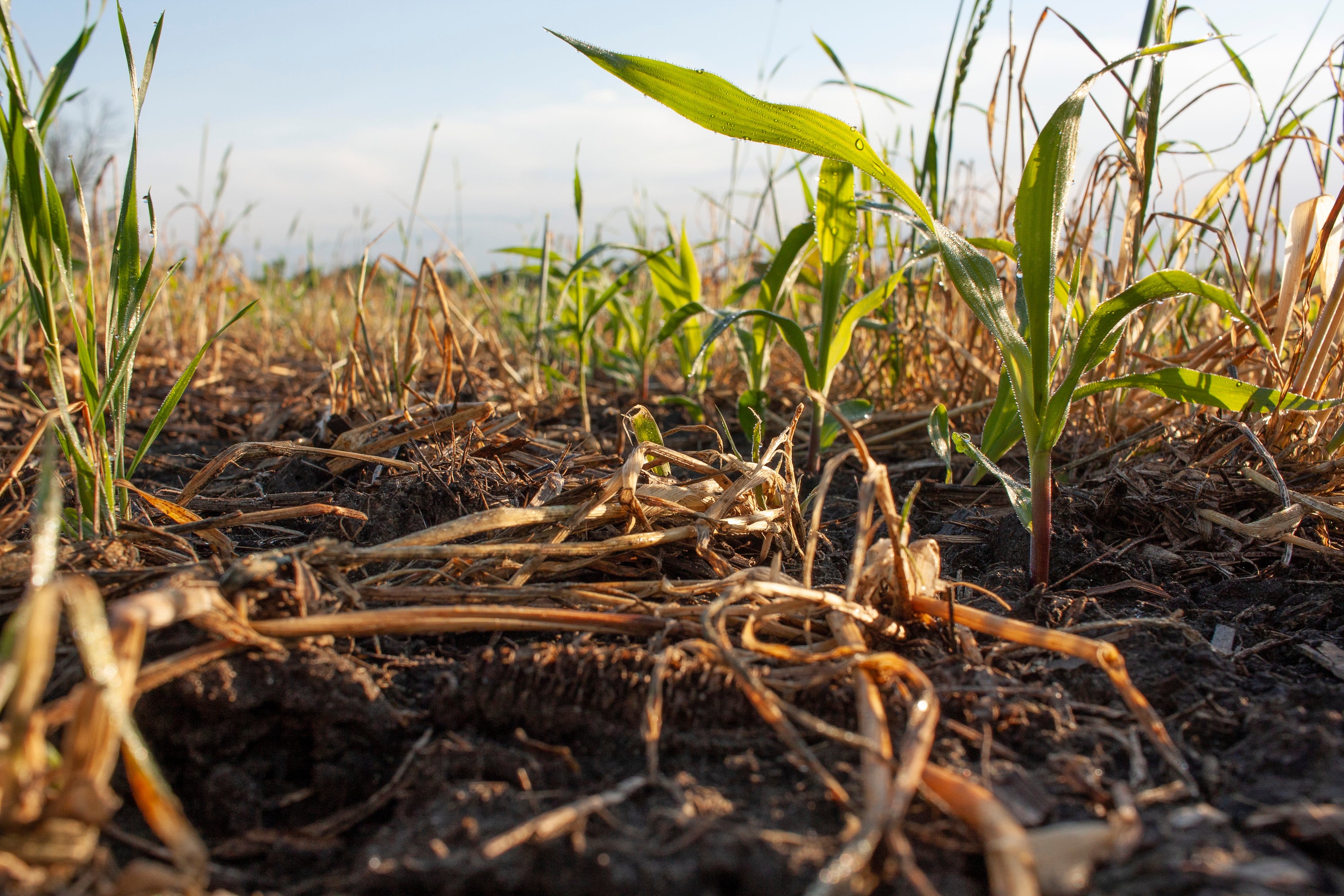Harvest - The end of the season for some. For others, it’s another step in the continuous cycle of farming. The change in season brings one universal factor to every farmer’s field: crop residue.

Crop Residue - Opportunity or Limiting Factor?
For many fields, especially no-till or limited-till operations, the accumulation of residue can limit production on the farm. Post-harvest residue can become a challenge during spring planting. Planters bouncing off unbroken residue prevents consistent planting and uniform planting depth. This inevitably leads to yield loss, and can lower the overall success of your field. Excessive residue can delay soil warming in the Spring, be hard on tires and equipment, and become a home for pathogens and insects which become detrimental to next year’s crop. Removal, burning, or burying crop residue can prevent you, the farmer, from getting the most of the minerals and carbon you have already paid to grow. There is a better way to gain erosion control, carbon enhancement, pathogen control, and the fertility efficiency that comes with nutrient cycling: using your crop residue.
Biological Digestion!
Rather than removing or burning residue, farmers can repurpose it into a useful input and return lasting nutrients and organic carbon to their soil. The microbial breakdown of crop residue allows you to infuse minerals and carbon, taking some of the work and expense out of the next season when you utilize the nutrients you grew!
A Broad-Spectrum liquid biological such as BIOACTIVE LiquiLife (formerly CX-1) is an easy-to-apply tool that can support the breakdown of crop residue. In the video below, we see the effects of applying liquid biology to your field, and how it changes the composition of your residue after harvest. Untreated crop residue remains sturdy, moist, and flexible, preventing easy breakdown. Treated crop residue becomes brittle and easily shatters, facilitating natural breakdown and allowing for thorough incorporation. This is a sign that microbes have broken down the cellulose in the leftover plant material and that the minerals that were previously ‘locked up’ in crop residue are now available for uptake through mineral cycling.
The decomposition of organic matter is promoted by beneficial bacteria and fungi, which is why a fall application of BIOACTIVE LiquiLife is so essential for an easy Spring planting. Microbes do so much more than just break down residue, they incorporate those materials into your soil so they can feed your crop in the next season. Plants naturally return carbon to the soil by capturing it from the atmosphere, cycling it, and then delivering it in a stable form to the soil. However, when your plants die off at the end of the season, they leave a large amount of carbon at the soil’s surface. Sticks, branches, stems, and leaves are naturally broken down over time and incorporated into the soil, but the harvest-planting cycle may be too fast of a turn-around for nature to take its course. Having a little push from liquid biology can incorporate this remaining carbon, along with the minerals and amino acids left in your residue. Crop Residue Management is exactly that - breaking down carbon and moving the nutrients within to next year's crop.

Feeding Next Year’s Harvest
Microbes drive the transformation in your field, and a fall application of BIOACTIVE LiquiLife will do much more than just making spring planting easier.
For no-till and limited-till operations, crop residue management is essential to planting preparations. For all other operations, residue breakdown and incorporation makes it easier to prepare your field and feed your plants, while cutting down on fertility costs. A fall application of LiquiLife might be the most valuable application you make on your fields, no matter how you grow.
Diverse microbes working for you, in your field, so you don’t have to. For more information on making your crop residue management easier, contact our team of experts!



